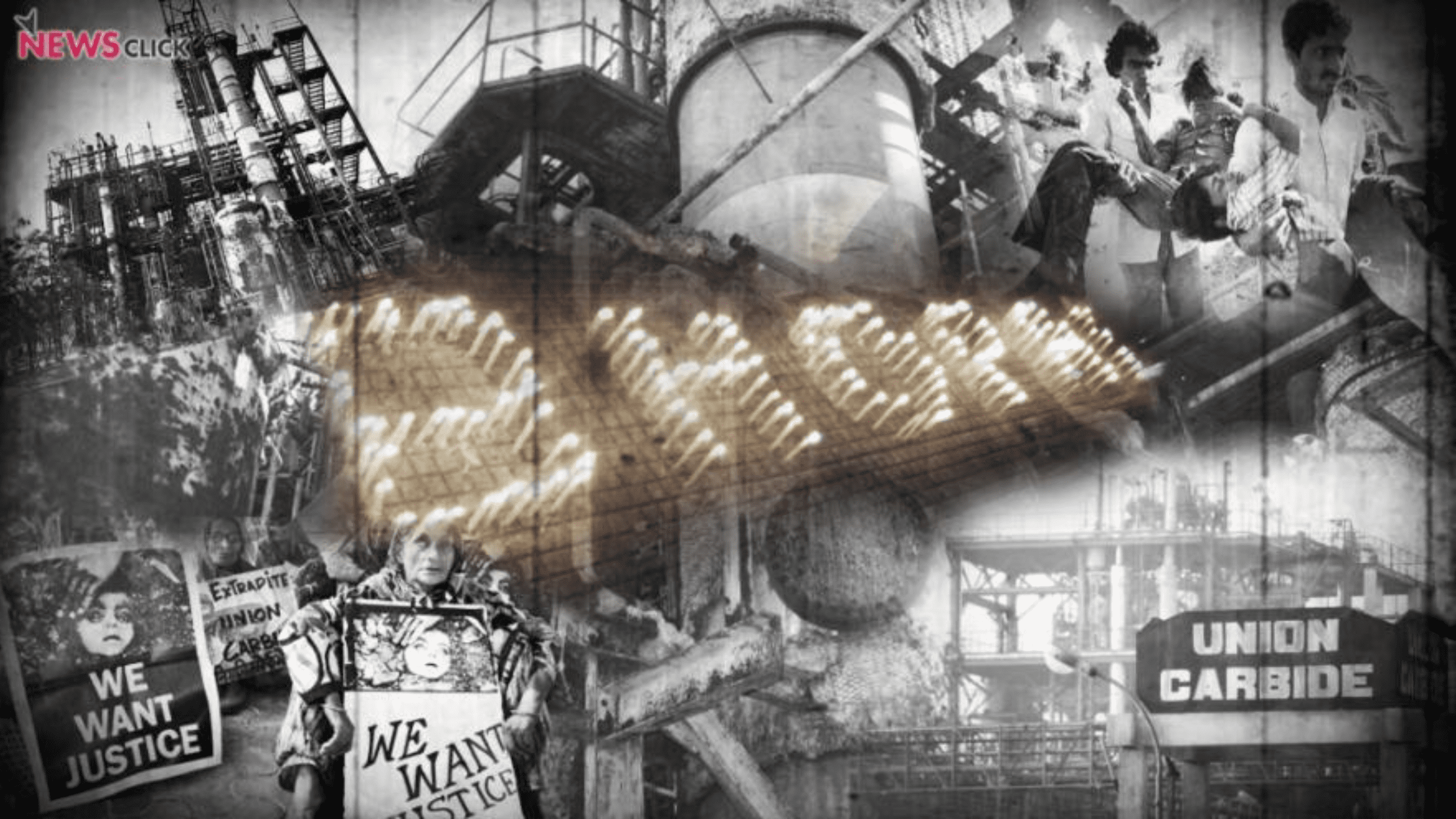The Bhopal Gas Tragedy: A Devastating Industrial Disaster And Its Aftermath. The Bhopal Gas Tragedy, which occurred on the night of December 2–3, 1984, in the city of Bhopal, India, is considered one of the worst industrial disasters in history.
Editor's Note: The Bhopal Gas Tragedy: A Devastating Industrial Disaster And Its Aftermath" has published today date since this topic of The Bhopal Gas Tragedy: A Devastating Industrial Disaster And Its Aftermath is important to read.
Our effort doing some analysis, digging information, made The Bhopal Gas Tragedy: A Devastating Industrial Disaster And Its Aftermath we put together this The Bhopal Gas Tragedy: A Devastating Industrial Disaster And Its Aftermath guide to help target audience make the right decision.
| Key differences | Key takeways |
|---|---|
| Date | December 2–3, 1984 |
| Location | Bhopal, India |
| Cause | Leak of methyl isocyanate (MIC) gas from a Union Carbide India Limited (UCIL) pesticide plant |
| Immediate deaths | 3,787 |
| Long-term deaths | 15,000–20,000 |
The disaster occurred when a large amount of MIC gas leaked from a storage tank at a Union Carbide India Limited (UCIL) pesticide plant in Bhopal. The gas spread through the city, affecting thousands of people. The immediate death toll was 3,787, but the long-term death toll is estimated to be between 15,000 and 20,000.

Pin on Social Media Creatives - Source in.pinterest.com
FAQ
This section provides additional information on the Bhopal Gas Tragedy, its aftermath, and the ongoing challenges associated with this devastating industrial disaster.
Bhopal Gas Tragedy - Industrial Disaster - Source www.facebook.com
Question 1: What were the primary causes of the Bhopal Gas Tragedy?
The tragedy occurred due to the accidental release of a toxic gas, methyl isocyanate (MIC), from a Union Carbide India Limited (UCIL) pesticide plant in Bhopal, India. The release was caused by a combination of factors, including a malfunctioning safety system, inadequate maintenance, and human error.
Question 2: What were the immediate consequences of the gas leak?
The gas leak resulted in the immediate deaths of thousands of people. Those who survived faced severe health issues, including respiratory problems, eye damage, and cancer. The disaster also had a profound impact on the environment, contaminating soil and water sources.
Question 3: What has been the long-term impact of the Bhopal Gas Tragedy?
The Bhopal Gas Tragedy has had a lasting impact on the lives of survivors and their families. Many continue to suffer from health problems related to the gas exposure, and the disaster has also had severe economic and social consequences.
Question 4: What legal and financial actions were taken in response to the tragedy?
Following the disaster, several legal cases were filed against Union Carbide and the Indian government. The company was eventually ordered to pay compensation to the victims, but the amount was widely criticized as inadequate.
Question 5: What lessons have been learned from the Bhopal Gas Tragedy?
The Bhopal Gas Tragedy highlighted the importance of industrial safety, environmental protection, and the need for stricter regulations on hazardous substances. It also emphasized the importance of providing adequate compensation and support to victims of industrial disasters.
Question 6: What is the current status of the Bhopal Gas Tragedy site?
The site of the disaster remains contaminated, and efforts to clean it up have been ongoing. The Indian government has established a Bhopal Gas Tragedy Relief and Rehabilitation Department to provide assistance to victims and their families.
The Bhopal Gas Tragedy remains a reminder of the devastating consequences of industrial negligence and the importance of ensuring the safety of communities and the environment in the face of hazardous substances.
Tips
This article summarizes the devastating effects of the Bhopal Gas Tragedy. While the tragedy was a result of multiple factors, there are key takeaways that can help prevent similar disasters in the future.
Tip 1: Maintain Strict Safety Standards
Establish clear protocols and conduct regular inspections to ensure adherence to safety regulations. Invest in advanced safety equipment and train employees on proper handling of hazardous materials.
Tip 2: Improve Emergency Preparedness Plans
Develop comprehensive plans with clear evacuation routes, communication channels, and medical response protocols. Conduct drills to ensure effectiveness and familiarity with procedures.
Tip 3: Foster Open Communication with the Community
Regularly engage with the surrounding community to provide information about potential risks and safety measures. Build trust and establish mechanisms for reporting concerns.
Tip 4: Enforce Strict Accountability
Hold individuals and organizations responsible for maintaining safety standards. Establish clear consequences for violations and enforce them consistently to deter negligence.
Tip 5: Encourage Continuous Learning and Improvement
Promote a culture of ongoing safety education and training. Stay abreast of technological advancements and industry best practices to enhance safety measures proactively.
By implementing these tips and prioritizing safety, we can strive to prevent future industrial disasters and protect the health and well-being of our communities.
The Bhopal Gas Tragedy: A Devastating Industrial Disaster And Its Aftermath
The Bhopal Gas Tragedy stands as a tragic reminder of the catastrophic consequences that can arise from industrial disasters. The incident unfolded in Bhopal, India, on the night of December 2-3, 1984, leaving behind an enduring legacy of devastation and suffering.
- Catastrophic Impact: The release of toxic methyl isocyanate gas from the Union Carbide India Limited plant led to an estimated 5,000 to 8,000 immediate deaths and countless long-term health issues.
- Corporate Negligence: The disaster was attributed to gross negligence on the part of the company, including inadequate safety measures, faulty equipment, and a lack of emergency response planning.
- Environmental Devastation: The release of chemicals contaminated the surrounding air, water, and soil, creating a toxic environment with lasting ecological implications.
- Health Crisis: The survivors of the tragedy continue to face severe health problems, including respiratory issues, cancer, birth defects, and neurological disorders.
- Delayed Justice: The legal battle for compensation and accountability dragged on for decades, highlighting the challenges of holding corporations responsible for industrial disasters.
- Lessons Learned: The Bhopal Gas Tragedy serves as a grim reminder of the urgent need for strict safety regulations, corporate accountability, and preparedness for industrial accidents.
The key aspects of the Bhopal Gas Tragedy expose the catastrophic consequences of industrial negligence, the importance of environmental protection, the need for accessible healthcare, the challenges of seeking justice, and the ongoing lessons to be learned from such disasters. By studying and understanding these aspects, we can work towards preventing similar tragedies and ensuring the safety and well-being of future generations.

Bhopal Gas Disaster Scar Never Healed | NewsClick - Source www.newsclick.in
The Bhopal Gas Tragedy: A Devastating Industrial Disaster And Its Aftermath
The Bhopal Gas Tragedy, which occurred in 1984 in Bhopal, India, stands as one of the most catastrophic industrial disasters in human history. The leakage of toxic methyl isocyanate gas from a Union Carbide India Limited pesticide plant resulted in the immediate deaths of thousands of people and long-term health consequences for countless others.

Aftermath | 35 Years After the Bhopal Gas Tragedy | Photo Exhibition - G5A - Source g5afoundation.org
The tragedy highlights the grave consequences of corporate negligence and the urgent need for stringent safety measures in industrial operations. It also underscores the importance of disaster preparedness and the provision of timely medical assistance in the aftermath of such events. Understanding the causes and effects of the Bhopal Gas Tragedy can help prevent similar disasters in the future and ensure timely and effective responses to industrial accidents.
Conclusion
The Bhopal Gas Tragedy stands as a tragic reminder of the devastating consequences of industrial disasters and the importance of prioritizing safety and preparedness.
The lessons learned from this tragedy must be applied to enhance safety measures, promote responsible corporate practices, and ensure that affected communities receive the necessary support and compensation.
